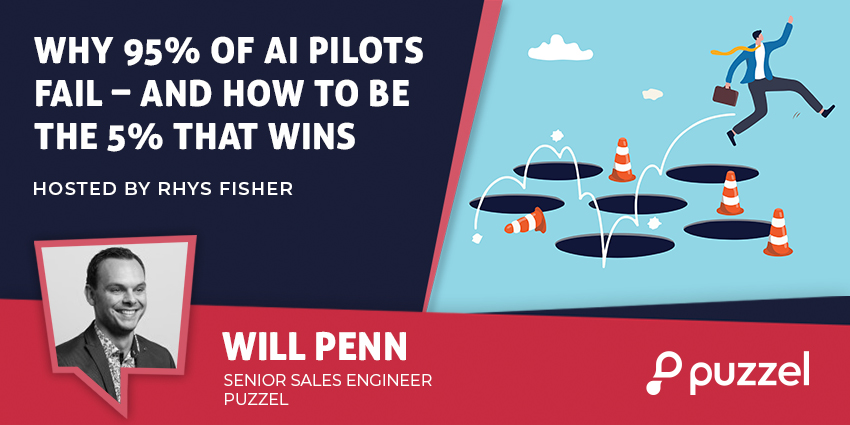The contact center has quietly become the most data-intensive function in modern business. What started as simple call logging has evolved into a complex ecosystem where billions of customer interactions generate unprecedented volumes of personal data – data that must be managed, protected, and governed in an increasingly complex regulatory landscape.
In this exclusive interview, we sit down with Martin Taylor, deputy CEO and co-founder of Content Guru, to explore how CX leaders can successfully navigate the challenges of data ownership while embracing the transformational potential of AI and automation.
Watch the Full Interview on Youtube
The Data Explosion: From Calls to Connected Everything
The scale of data generation in modern contact centers is staggering. “We’re creating billions of records a year just as Content Guru, as is everybody else,” Taylor explains in the interview. “So you’ve got increasingly information not just from calls anymore but from all the digital channels.”
But it’s the emergence of what Taylor calls the “digital customer” that’s truly transforming the landscape. With predictions of 39 billion Internet of Things devices by 2030, each representing a human in the eyes of regulators, the volume and variety of personal data flowing through CX environments is exploding exponentially.
” The UK Information Commissioner’s Office considers data generated by IoT devices – be it a movement or somebody’s temperature detected by a smart health device or a smart fridge reporting it is empty – as a piece of personal data,” Taylor notes.
The Jurisdiction Maze: Where Geography Meets Governance
One of the most complex challenges facing global organizations is navigating the intersection of geography and regulation. As Taylor explains, “Data is being produced at large volume all over the world, every day, every second. So how that is generated and the rules under which it is being generated vary by geography and by market segment.”
The implications go far beyond GDPR. While the regulation establishes that “the data subject is ultimately the owner of the data,” the practical responsibilities for processors and vendors create a complex web of obligations that vary by jurisdiction and sector.
“The EU want it to take place within the EU. The UK want it to take place within the UK, the US in the US,” Taylor explains. “And then if you go to the actual sectors themselves like medical or financial, they’ve got a load of rules of their own and those are done per country as well.”
Breaking Down Silos: The New Collaborative Imperative
The complexity of modern data governance is forcing unprecedented collaboration between traditionally separate functions. Taylor shares a real-time example from his own organization: “An example from here today is about something that’s come to my desk about live sentiment analysis and its legality within an EU AI Act context.”
This seemingly straightforward CX enhancement required input from legal, product, and information security teams – a pattern that’s becoming the norm rather than the exception. “Those sorts of conversations are happening throughout all levels of the value chain from the provider of a service right through to the vendor,” Taylor observes.
The Death of “Public Cloud” Assumptions
Perhaps one of the most significant shifts in thinking has been the abandonment of the idea that being “in the cloud” absolves organizations of data responsibility.
“I think we’ve seen the death of this idea of there being such a thing as a public cloud,” Taylor states emphatically. “Everyone can see that clouds belong to organizations now and that they reside in specific jurisdictions.”
The AWS outage in Virginia that affected organizations worldwide serves as a stark reminder of this reality. Many affected companies didn’t even know they had connections to that specific location, highlighting the importance of understanding not just whose cloud you’re using, but where it physically resides and under what jurisdictions it operates.
Balancing Innovation with Responsibility
As organizations rush to embrace AI and automation, the challenge becomes maintaining innovation velocity while ensuring responsible data handling. Taylor uses an oil refinery analogy to explain this balance: “I think of raw data as like crude oil and then the refining process, fractional distillation. You’re looking now for that kind of high quality racing fuel that we use to feed the AI.”
Not every implementation needs to become more complex, but those involving AI require higher-quality data and more sophisticated governance. “In some cases, it’s AI, it needs that richer fuel. You can’t feed it the heating oil, because it won’t work,” Taylor explains.
Looking Ahead: Preparing for 2026 and Beyond
As we look toward the year ahead, Taylor predicts continued growth in both opportunity and complexity. “We’ve all heard a lot about agentic AI during 2025. I think 2026 is when it starts to get applied,” he notes, while emphasizing that this won’t mean wholesale replacement of human agents.
Instead, organizations should prepare for “more data, more automation, and that means more data handling challenges.” This will require:
- Enhanced Security Postures: Moving beyond perimeter defense to comprehensive data protection throughout its lifecycle
- Geographic Strategy: Making deliberate choices about data processing locations based on customer needs and regulatory requirements
- Vendor Due Diligence: Evaluating partners not just on technical capabilities but on jurisdictional alignment and compliance frameworks
The Trust Dividend
Ultimately, the organizations that succeed in this complex landscape will be those that can demonstrate they’re worthy stewards of customer data. As Taylor concludes, “There’s going to be a lot more scrutiny of how all of this wonderful new processing is going to happen.”
The complexity brings opportunity for those willing to invest in getting it right. By building transparent, responsible data governance practices, organizations can turn compliance obligations into competitive advantages – earning customer trust while enabling innovation.
The question isn’t just who owns your customer data – it’s whether you’re prepared to prove you deserve that ownership.
Continue the Conversation
For more insights on navigating these challenges, visit contentguru.com






